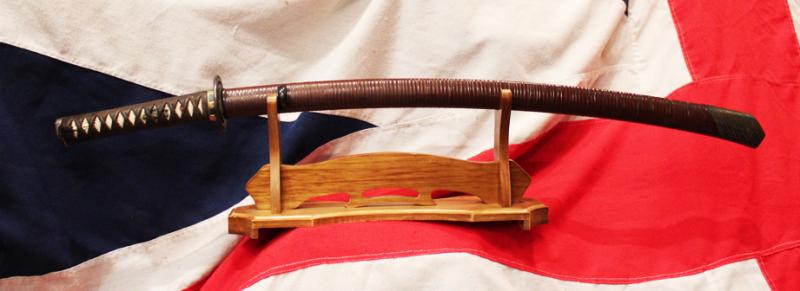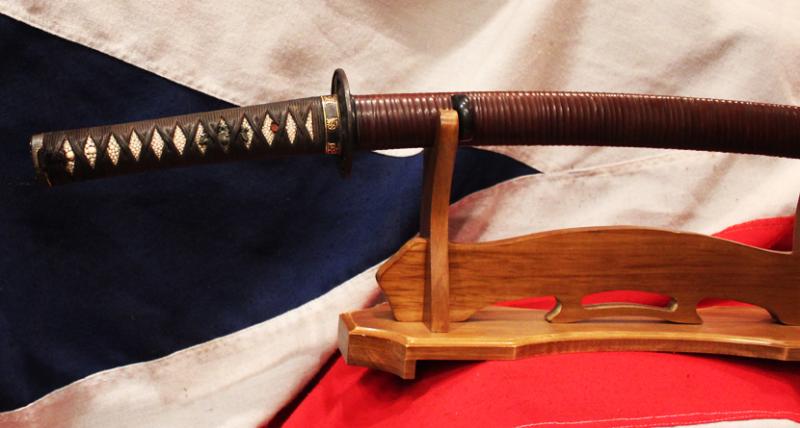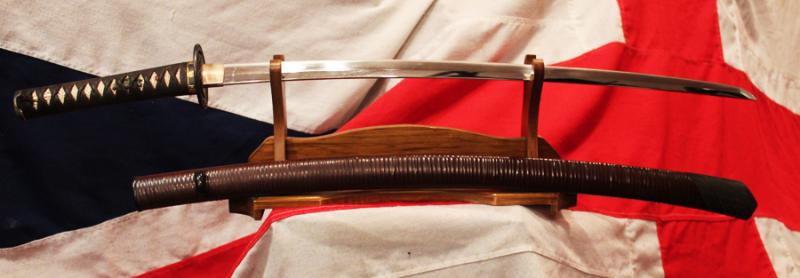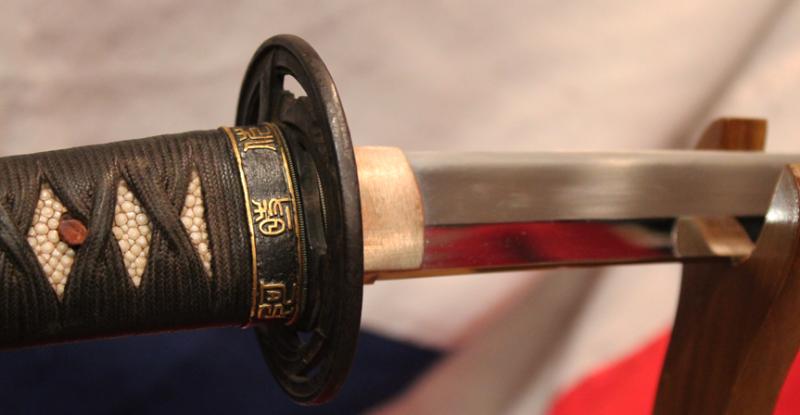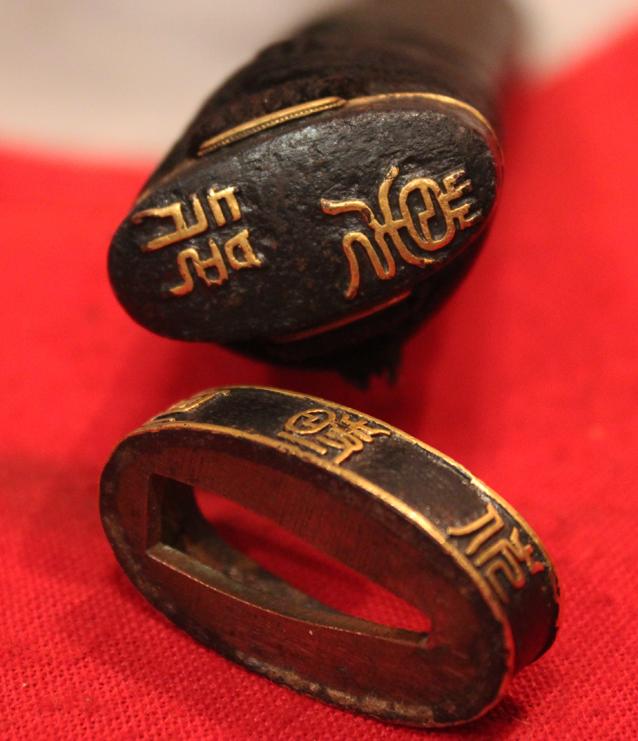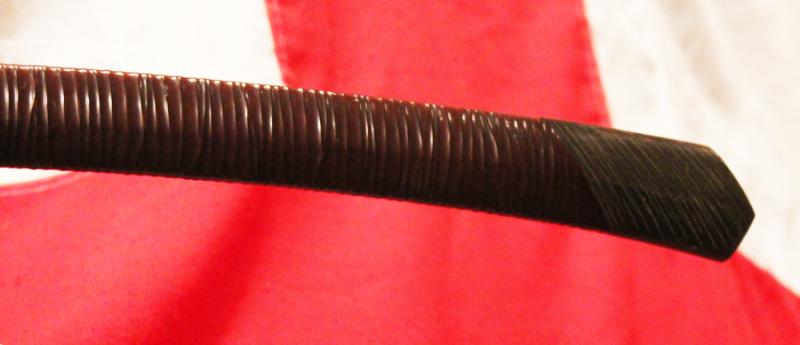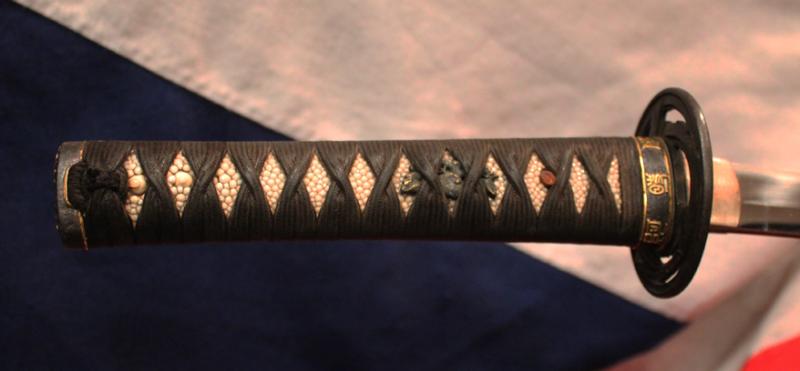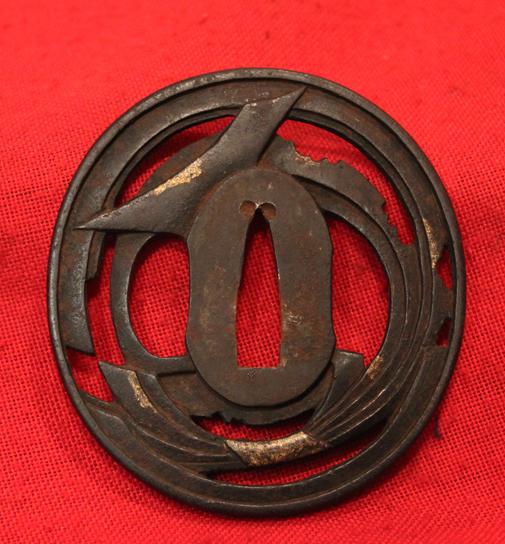A Beautiful, Ancient, Bizen Koto Katana, Circa 1380 Nambokochu Era, with Stunning All Original Edo Fittings
This is an amazing light and elegant sword, in fabulous condition throughout, with incredible balance, and it has the lightness of feeling of a surgeon's scalpel. The samurai that commissioned this sword to be made, almost 650 years ago, must have been an incredibly nimble, fast and athletic samurai, without doubt a warrior of unmatched skill in the art of kenjutsu technique of the sword and bushido the way of the warrior. A most formidable foe indeed, and best avoided if at all possible. Of course all its subsequent samurai owners, of which there would likely have been many over 600 years or so, would also have had similar skills.
Made in the transitional period between Nambokochu and Muromachi. Super ancient narrow blade with wonderful curvature and typical narrow hamon of the Nambokochu era. Delightful original Edo fittings including its superb Edo urushi dark brown lacquer saya with deep ribbing and a court cap pattern saya-jiri bottom chape mount. The iron fushi kashira have pure gold inlaid ancient kinbuntai kanji. Kinbuntai (金文体) is the second oldest type of characters. These were found engraved on bronze vessels, hence the name kin (metal) bun (word).
The iron tsuba is beautifully chisseled with crisp edges with noshi decoration in openwork, possibly by Kinai of Echizen. Edo period.Iron tsuba of round form pierced (sukashi) and carved (marubori) with a ‘noshi‘ decoration design. Noshi – decoration made of dried abalone (awabi) and bearing an auspicious connotation of good fortune, prosperity, etc. Design was used as a family crest (mon). Noshi is an auspicious motif which used to be flattened abalone strips and was decorated on a gift.
Looking at the late Nanbokucho period, the main Bizen smiths last signed eras (the last dated examples do not always coincide with the end of the smith’s career) were Joji for Motoshige, Koryaku for Chogi, and Oei for Omiya Morishige. Many of the Bizen dates moved up to Eiwa, Koryaku, Eitoku, Shitoku, Kakei, Ko-o, and Meitoku, and the tachi shapes changed to become narrower. Chogi’s Koryaku era tachi are narrow, but without other style changes. Morikage’s work from the end of the Nanbokucho period have a narrow shape with small hamon which is similar to Kosori work. Also, there are many Bizen smiths who are not belong to famous schools and do not have a clear school style and people called all of these smiths Kosori smiths. Overall, at the end of the Nanbukucho period, Bizen swords became narrower, and at the same time, the mainstream school’s characteristics gradually disappeared and a smaller hamon become popular. As is often with ancient swords the story of it's use starts in the era before it was actually made, by it's master smith, maybe a decade earlier in the Nanboku-cho period (Northern and Southern Courts period) Spanning from 1336 to 1392, it was a period that occurred during the formative years of the Muromachi
bakufu of Japan's history.
The Imperial seats during the Nanboku-cho period were in relatively close proximity, but
geographically distinct. They were conventionally identified as:
Northern capital : Kyoto
Southern capital : Yoshino.
During this period, there existed a Northern Imperial Court, established by Ashikaga Takauji in Kyoto, and a Southern Imperial Court, established by Emperor Go-Daigo in Yoshino.
Ideologically, the two courts fought for fifty years, with the South giving up to the North in 1392.
However, in reality the Northern line was under the power of the Ashikaga shoguns and had little real independence. This sword would very likely have been used in the Onin War (1467-1477) which led to serious political fragmentation and obliteration of domains: a great struggle for land and power ensued among bushi chieftains and lasted until the mid-sixteenth century. Peasants rose against their landlords and samurai against their overlords, as central control virtually disappeared. The shugo daimyo were the first group of men to hold the title "daimyo". They arose from among the shugo during the Muromachi period. The shugo daimyo held not only military and police powers, but also economic power within a province. They accumulated these powers throughout the first decades of the Muromachi period.
Major shugo daimyo came from the Shiba, Hatakeyama, and Hosokawa clans, as well as the tozama clans of Yamana, Ouchi, and Akamatsu. The greatest ruled multiple provinces. 25.25 inches long blade
Did you know? the most valuable sword in the world today is a samurai sword, it belongs to an investment fund and has appeared illustrated in the Forbes 400 magazine. It is valued by them at $100 million, it is a tachi from the late Koto period 16th century and unsigned. Its blade is grey and now has no original polish remaining.
Code: 24381
6450.00 GBP

